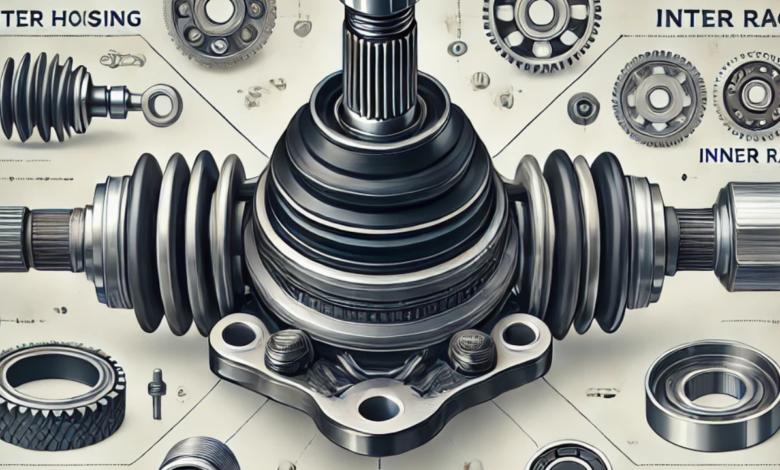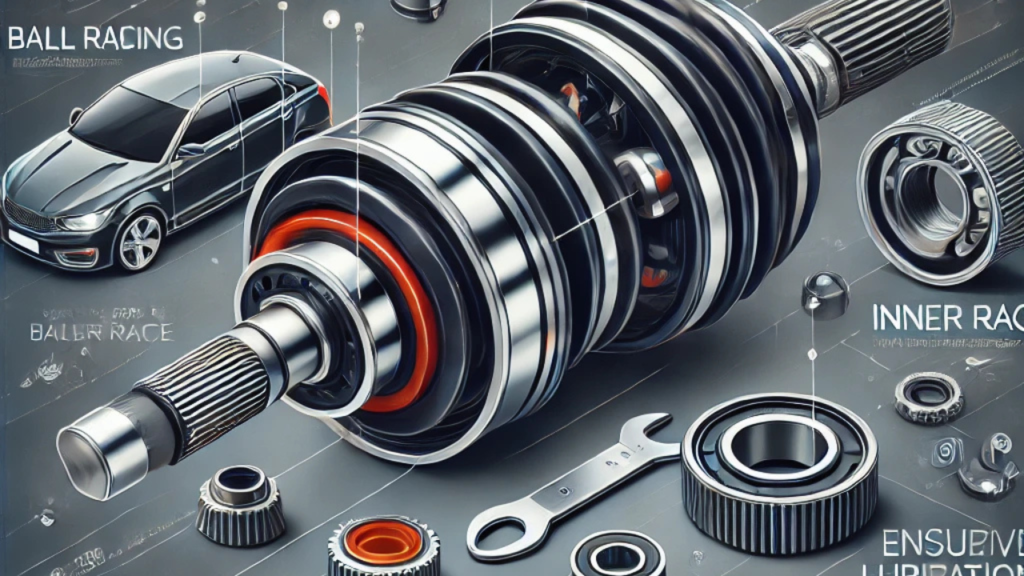The Essential Guide to Understanding and Maintaining Your CV Joint

- Introduction to CV Joints
CV Joints, or Constant Velocity Joints, are essential components in a vehicle’s drivetrain system. These joints connect the transmission to the wheels, ensuring power is smoothly transferred, even during steering or suspension movements. Without CV Joints, the vehicle’s drivetrain would be unable to accommodate the complex motion of the wheels, making safe and efficient driving impossible.
There are two primary types of CV Joints: fixed and plunge. Fixed CV Joints are designed to handle rotational movements, while plunge CV Joints accommodate changes in length, especially in vehicles with independent suspension systems. Each plays a critical role in ensuring a vehicle’s stability and maneuverability.
Understanding CV Joints is not just for mechanics; it’s valuable knowledge for any vehicle owner. By learning about these components, drivers can better appreciate their importance, recognize signs of wear, and take timely action to prevent potential failures. This guide delves into the intricacies of CV Joints, providing practical advice for maintenance and repair.
- How CV Joints Work
A CV Joint ensures the wheels receive consistent power from the engine, regardless of steering angles or suspension movement. This functionality is crucial for front-wheel and all-wheel-drive vehicles, where maintaining smooth power delivery is paramount.
The anatomy of a CV Joint includes several key components. The outer housing provides structural support, while ball bearings facilitate smooth rotational movement. The inner race allows flexibility, and a protective rubber boot removes contaminants like dirt and water. This protective boot is particularly important, as damage can lead to joint failure.
CV Joints differ from U-joints in their ability to maintain constant rotational speed. While U-joints experience speed fluctuations, CV Joints deliver consistent velocity, making them better suited for modern vehicles that demand high performance and precision. Understanding this mechanism helps drivers appreciate the advanced engineering behind these joints.
- Signs of a Failing CV Joint
Recognizing the symptoms of a failing CV Joint is critical to avoiding costly repairs or accidents. One of the most common indicators is a clicking or popping noise when turning. This sound occurs when the joint’s internal components are worn and the load struggles to handle.
Another symptom is excessive vibration during acceleration. This often points to an imbalanced or damaged CV Joint. Additionally, grease leakage from a torn or damaged boot is a red flag. The grease is essential for lubrication, and its absence can lead to rapid wear of the joint components.
Ignoring these signs can lead to severe consequences, including loss of vehicle control. Drivers are advised to conduct regular inspections and road tests. For example, visual inspections can reveal grease leaks, while listening for unusual sounds during tight turns can help pinpoint potential issues. Prompt action can save drivers significant time and money while ensuring their safety.
- Maintaining and Replacing CV Joints
Maintaining CV Joints involves regular inspections and proactive measures to prevent wear. Start by checking the protective boots for tears or cracks. Replacing a damaged boot immediately can prevent dirt and moisture from entering the joint, extending its lifespan.
When a CV Joint shows signs of wear, replacement becomes inevitable. The replacement process involves removing the wheel and axle, disassembling the old joint, and installing a new one. While this task can be done at home with the right tools, it’s often best left to professionals to ensure proper alignment and functionality.
The cost of replacing a CV Joint varies depending on the vehicle’s make and model. On average, drivers can expect to spend between $150 and $800. Regular maintenance, however, can significantly reduce the likelihood of costly repairs, emphasizing the importance of vigilance and care.
- Tips for Prolonging the Life of Your CV Joints
Prolonging the life of your CV Joints requires attention to driving habits and maintenance routines. Avoiding aggressive driving, such as sharp turns and rapid acceleration, reduces joint stress. Smooth driving not only protects the joints but also enhances overall vehicle performance.
Another critical factor is choosing high-quality replacement parts. Opt for reputable brands that offer durable components designed to withstand harsh conditions. Additionally, regular lubrication ensures that the joint operates smoothly. Keeping the protective boot intact is equally essential, as it prevents contaminants from entering the joint.
Regular inspections by a professional mechanic can identify potential issues early. A quick check during routine servicing can save drivers from unexpected breakdowns and expensive repairs. By following these practices, vehicle owners can ensure their CV Joints remain in optimal condition for years.
- Conclusion
The CV Joint is a small but mighty vehicle safety and performance component. By understanding how these joints work, recognizing the signs of wear, and implementing proper maintenance, drivers can avoid costly repairs and ensure their vehicle operates smoothly.
Timely action is the key to preserving CV Joints. Regular inspections, careful driving habits, and immediate replacement of damaged parts not only extend the life of the joints but also contribute to overall vehicle reliability. Make CV Joint maintenance a priority to enjoy a safer and more efficient driving experience.
- Frequently Asked Questions (FAQs)
What does CV stand for in CV Joint?

CV stands for Constant Velocity. This refers to the joint’s ability to transmit power at a consistent rotational speed regardless of steering angles or suspension movements.
How often should I check my CV Joints?
It is advisable to inspect your CV Joints during regular vehicle servicing or when you notice unusual sounds, vibrations, or grease leaks.
Can I drive with a damaged CV Joint?
Driving with a damaged CV Joint is risky and can lead to a complete breakdown. To ensure safety, it’s best to address the issue immediately.
How much does it cost to replace a CV Joint?
Replacement costs range from $150 to $800, depending on the vehicle’s make and model. Regular maintenance can minimize these expenses.
Are CV Joint repairs covered under vehicle warranties?
In many cases, CV Joint repairs are covered under powertrain or drivetrain warranties. Check your vehicle’s warranty details for specific coverage.
Can I replace a CV Joint or go to a mechanic?
While replacing a CV Joint at home with the right tools and expertise is possible, professional replacement ensures proper installation and alignment, minimizing potential risks.
You May Also Read: https://ukinfomagazine.co.uk/nnt-microsoft/




